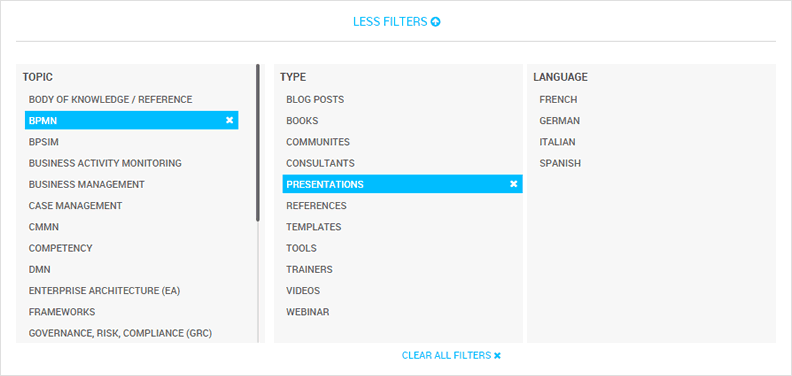10 Types of Node.js Applications You Can Build in 2023
This blog elucidates the ten foremost applications of Node.js in 2023, ranging from real-time applications to server-side rendering. By delving into the versatility and capabilities of Node.js, we aim to unveil the captivating potential it offers. Thus, let us embark on this exploration and uncover the remarkable prospects presented by Node.js.
Table of Content
Watch this Full Stack Web Development Course video:
{
“@context”: “https://schema.org”,
“@type”: “VideoObject”,
“name”: “Full Stack Web Development Course | Full Stack Developer Course | Intellipaat”,
“description”: “10 Types of Node.js Applications You Can Build in 2023”,
“thumbnailUrl”: “https://img.youtube.com/vi/ofekyjYd0xM/hqdefault.jpg”,
“uploadDate”: “2023-07-21T08:00:00+08:00”,
“publisher”: {
“@type”: “Organization”,
“name”: “Intellipaat Software Solutions Pvt Ltd”,
“logo”: {
“@type”: “ImageObject”,
“url”: “https://intellipaat.com/blog/wp-content/themes/intellipaat-blog-new/images/logo.png”,
“width”: 124,
“height”: 43
}
},
“embedUrl”: “https://www.youtube.com/embed/ofekyjYd0xM”
}
What Is Node.js?
Developers use Node.js as a runtime environment to execute JavaScript code outside of a web browser. Node.js relies on the Chrome V8 JavaScript engine, known for its high performance and efficient execution of JavaScript code. By employing an event-driven, non-blocking I/O model, Node.js remains lightweight while efficiently managing numerous concurrent connections.
JavaScript serves mainly as a client-side scripting language for web browsers. Nevertheless, the advent of Node.js has enabled developers to employ JavaScript on the server-side. This expansion unlocks a multitude of possibilities, allowing JavaScript to be utilized for comprehensive development tasks and facilitating smooth integration between the front-end and back-end components of an application.
Preparing for Interviews, Node.js Interview Questions and Answers is your chance to pass it with flying colors.
10 Popular Types of Node.js Apps

Real-Time Collaboration Tools
Real-time collaboration tools actively facilitate seamless communication and collaboration among users in real time. Users can work together on shared projects, exchange messages, share files, and collaborate on documents simultaneously through these tools.
Building real-time collaboration tools is best accomplished using Node.js, thanks to its event-driven architecture and WebSocket support. These features enable instant and efficient communication between clients and servers, making Node.js an excellent choice for this purpose.
Example: Google Docs
Google Docs is a cloud-based document editing and collaboration tool that also relies on Node.js for real-time collaboration capabilities. Multiple users can simultaneously edit a document, and changes are instantly synced across all connected devices, facilitating seamless collaboration.
Single-Page Applications
Single-page applications (SPAs) are web applications that load and operate within a single web page, eliminating the need for page reloads and providing a more fluid user experience. Node.js, in conjunction with popular front-end frameworks like Angular or React, is commonly used to build SPAs. Node.js efficiently handles server-side rendering, data management, and API integrations, making it an ideal choice for developing SPAs.
Example: Facebook
Facebook’s web application is a prime example of a single-page application. When navigating through different sections of Facebook, such as the news feed, notifications, or messages, the page does not reload entirely, resulting in a smooth and uninterrupted user experience. Node.js plays a crucial role in handling real-time updates and data synchronization in such complex applications.
To learn more about Node JS check out Intellipaat’s Node JS Course today!
Real-Time Applications
In order to provide users with live information, real-time applications necessitate instant data processing and immediate updates. Building real-time applications is effectively supported by Node.js, owing to its event-driven architecture and non-blocking I/O model. This framework enables developers to manage a significant number of concurrent connections without compromising performance.
Example: Slack
Slack is a communication platform that enables teams to collaborate in real-time through channels, direct messages, and file sharing. It stands out as a notable instance of a real-time application constructed with Node.js. With the capability to handle thousands of concurrent connections, Node.js empowers Slack to facilitate instant messaging and foster seamless communication among team members.
Career Transition
Location-Based Applications
Location-based applications employ geolocation data to provide personalized services and information according to a user’s location. The utilization of Node.js, which possesses the capability to manage real-time data updates, constitutes a fitting selection for constructing location-based applications. It proficiently processes and synchronizes location data between the server and clients.
Example: Uber
Node.js powers Uber, a well-known ride-sharing service, serving as an exemplary instance of a location-based application. Uber employs Node.js actively to manage the real-time tracking of drivers and passengers, match them according to their locations, and deliver precise and current details regarding ride availability and estimated arrival times.
Streaming Applications
Streaming applications actively process and deliver media content, including videos, music, or live events, in real-time. Building streaming applications can benefit from the efficient handling of large file uploads and downloads offered by Node.js. This choice of technology ensures smooth and uninterrupted streaming experiences for users.
Example: Netflix
Netflix, the foremost streaming platform, utilizes Node.js in its streaming infrastructure. Node.js empowers Netflix to manage the enormous data traffic related to streaming videos to millions of users concurrently. It guarantees dependable content delivery, effortless playback, and uninterrupted user experiences across various devices.
Internet of Things (IoT)
The Internet of Things (IoT) refers to the network of physical devices embedded with sensors, software, and connectivity capabilities, allowing them to exchange data and interact with each other through the internet. Node.js plays a significant role in developing IoT applications due to its lightweight nature, event-driven architecture, and ability to handle a large number of concurrent connections.
Example: Philips Hue
Philips Hue, a smart lighting system, exemplifies an IoT application that utilizes Node.js. It empowers users to remotely control their lights, modify colors, and establish automated lighting schedules. By facilitating real-time communication between the user’s mobile device and the smart lighting system, Node.js enables seamless control and synchronization of the lights.
Microservices Architecture
Microservices architecture is an architectural style where complex applications that are built as a collection of small, independent services, each running in its own process and communicating through lightweight mechanisms like APIs. Node.js is well-suited for microservices-based architectures due to its modular and scalable nature.
Example: Netflix
In the realm of companies utilizing Node.js for microservices, Netflix stands as a prominent example. Employing a profoundly distributed architecture, Netflix operates an extensive array of microservices responsible for diverse functions, including user authentication, recommendation engine operations, and content delivery.
By leveraging Node.js, Netflix achieves streamlined development cycles, heightened scalability, and enhanced availability, facilitating the efficient creation and upkeep of these microservices.
Unlock the Power of Node.js – Check out our Node.js Tutorial Today!
Complex Fintech Applications
In the fintech industry, the utilization of technology to deliver financial services, including payment processing, lending platforms, investment management, and others, is a common practice. Node.js is becoming increasingly popular in this sector because of its swift performance, scalability, and event-driven structure, enabling it to effectively manage heavy traffic volumes and process real-time data.
Example: Stripe
Stripe is a prominent online payment processing company, that employs Node.js for their intricate fintech application. By utilizing Node.js, Stripe efficiently manages a substantial volume of payment transactions and executes real-time data updates. The event-driven characteristics of Node.js enable Stripe to seamlessly handle asynchronous tasks such as payment processing, notification sending, and report generation.
Ecommerce Applications
Ecommerce applications have revolutionized the way we shop and conduct business online. Node.js proves to be an excellent choice for developing e-commerce applications due to its ability to handle high traffic loads, scalability, and real-time capabilities. By leveraging Node.js, businesses can create robust and interactive online shopping platforms that offer seamless user experiences.
Example: Etsy
Etsy, a global marketplace for unique handmade and vintage items, exemplifies the use of Node.js for e-commerce applications. At Etsy, numerous concurrent connections are managed as users search for products and add items to their carts, and complete purchases. By leveraging Node.js, Etsy efficiently oversees real-time inventory updates, securely handles payment transactions, and provides personalized recommendations to its users.
Content Management Systems
Managing and delivering digital content effectively makes the use of Content Management Systems (CMS) necessary. CMS platforms that demand real-time updates, seamless content delivery, and efficient content management can be powered by Node.js. Developers can leverage its event-driven architecture and caching mechanisms to construct robust and interactive CMS solutions.
Example: Ghost
Ghost is an open-source CMS platform, serving as a prominent instance of a company actively employing Node.js for content management systems. Ghost prioritizes simplicity, speed, and flexibility in its operations. Users can effortlessly create and oversee their blogs or publications through this platform. By utilizing Node.js, Ghost ensures the seamless delivery of real-time content updates, proficiently handles simultaneous user requests and facilitates a smooth writing and publishing experience.
Conclusion
We have deliberated on the ten preferred types of Node.js applications and examined numerous renowned applications built using this runtime engine. Additionally, you have comprehended the manner and rationale behind the utilization of Node.js by numerous leading technology companies to fuel their servers.
For any queries, reach out to our Web Technology Community!
The post 10 Types of Node.js Applications You Can Build in 2023 appeared first on Intellipaat Blog.
Blog: Intellipaat - Blog
Leave a Comment
You must be logged in to post a comment.













